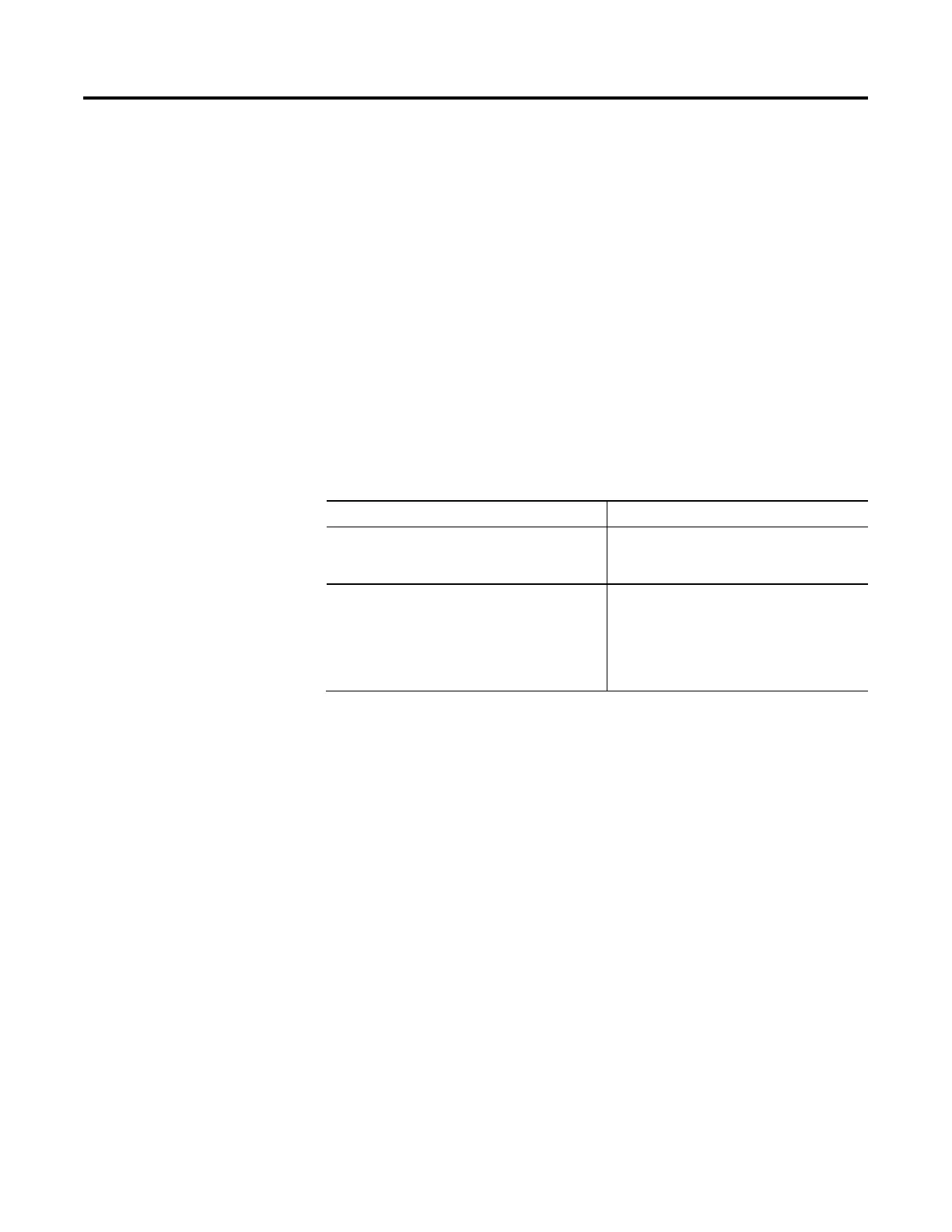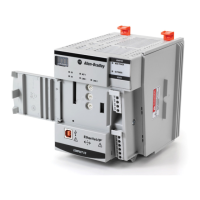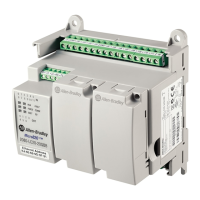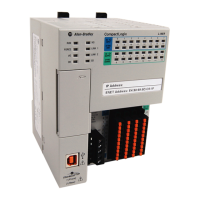Common Attributes for Advanced Process Control and Drives Instructions
548 Rockwell Automation Publication 1756-RM006K-EN-P - November 2018
LINT data type is a 64-bit integer.
The LINT data type can be used in numerous instructions on Compact
GuardLogix 5380, CompactLogix 5380, CompactLogix 5480, ControlLogix
5580, or GuardLogix 5580 controller however the LINT data type cannot be used
in most instructions on CompactLogix 5370, ControlLogix 5570, Compact
GuardLogix 5370, GuardLogix 5570 controllers.
Consider the following when using LINT data type on CompactLogix 5370,
ControlLogix 5570, Compact GuardLogix 5370, GuardLogix 5570 controllers.
Tip:
LINTs can only be used with copy (COP, CPS) instructions. They are used with the
CST/WallClock Time attribute, time synchronization and Add-On Instructions. You
cannot add, subtract, multiply, or divide this tag type.
When using LINT data types, consider the following descriptions when these
issues occur.
How to Description
Move/copy two double-integer DINT values into one LINT Create a double integer array of two elements, total of 64
bits (that is, DINT[2], which can then be copied into one
long integer.
Correct Date/Time Display error When a tag has a negative value, it cannot be displayed as
Date/Time. In the tag editor, check whether the value is
negative by changing the style of the tag from Date/Time
to Binary. When the most significant bit (leftmost one) is
1, the value is negative and therefore cannot be displayed
as a Date or Time.
This information applies to the CompactLogix 5370, ControlLogix 5570,
Compact GuardLogix 5370, GuardLogix 5570, Compact GuardLogix 5380,
CompactLogix 5380, CompactLogix 5480, ControlLogix 5580, and GuardLogix
5580 controllers. Controller differences are noted where applicable.
Logix controllers handle floating point values according to the IEEE 754 standard
for floating-point arithmetic. This standard defines how floating point numbers
are stored and calculated. The IEEE 754 standard for floating point math was
designed to provide speed and the ability to handle very large numbers in a
reasonable amount of storage space.
A REAL tag stores a single-precision, normalized floating-point number.
An LREAL tag stores a double-precision, normalized floating-point number.
The controllers support these elementary data types:

